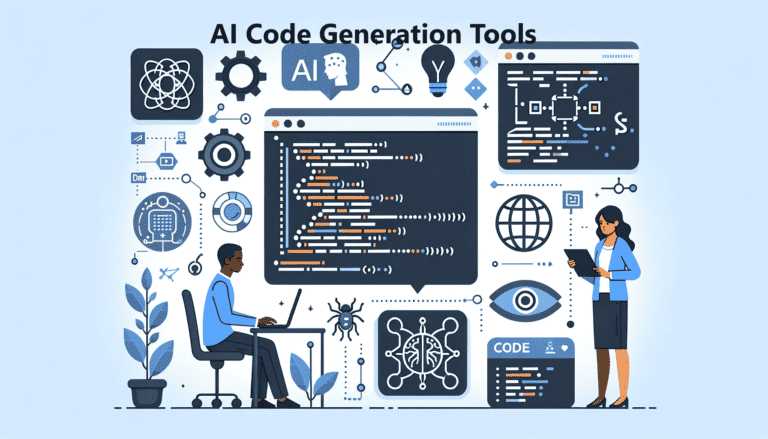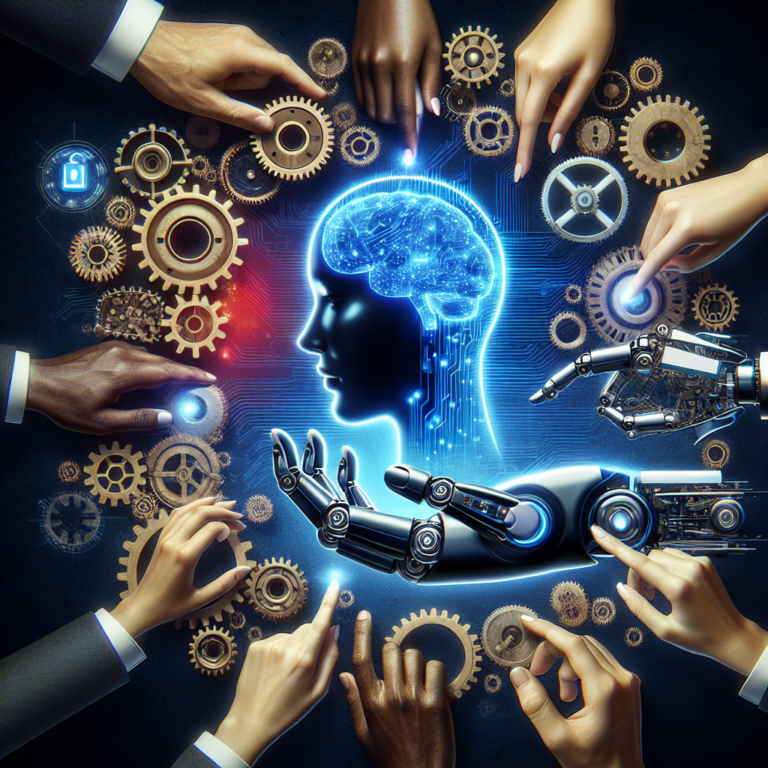
Imagine having a virtual assistant at your fingertips, ready to assist you with any task or answer any question, just like a trusted friend. The rise of conversational AI, the development and use of AI for building chatbots and virtual assistants, has revolutionized the way we interact with technology. These intelligent and friendly companions have become an integral part of our daily lives, offering personalized experiences and streamlining various tasks. In this article, we will explore the fascinating world of conversational AI, its development, and its potential to transform our digital interactions. Get ready to embark on a journey where the boundaries between technology and human conversations blur, paving the way for more intuitive and effortless interactions.

Understanding Conversational AI
Conversational AI refers to the development and use of artificial intelligence (AI) technology for building chatbots and virtual assistants. These AI-powered systems are designed to interact and communicate with users in a manner that simulates human conversation. Conversational AI has gained significant attention and popularity in recent years due to its ability to enhance customer experience, improve efficiency and productivity, and provide 24/7 availability.
Definition of Conversational AI
Conversational AI involves the utilization of natural language processing (NLP), machine learning, and deep learning algorithms to enable machines to understand and respond to human language. It aims to create intelligent virtual agents that can engage in meaningful conversations with users, providing them with information, assistance, and support.
Importance of Conversational AI
The rise of conversational AI is driven by its ability to transform the way businesses interact with their customers. By enabling machines to understand and respond to human language, conversational AI enhances customer experience by providing personalized, real-time support and assistance. It also improves efficiency and productivity by automating repetitive tasks and reducing the need for human intervention. Additionally, conversational AI ensures 24/7 availability, allowing businesses to engage with customers at any time, across various platforms and channels.
Types of Conversational AI
Conversational AI can be categorized into two main types: text-based chatbots and voice-based virtual assistants.
Text-based Chatbots
Text-based chatbots are designed to interact with users through written messages. These chatbots are commonly used in various applications, such as customer support, e-commerce, and content delivery. They use natural language processing algorithms to understand user queries, generate appropriate responses, and simulate human-like conversations.
Voice-based Virtual Assistants
Voice-based virtual assistants, on the other hand, utilize speech recognition technology to interact with users through voice commands. These virtual assistants, such as Amazon’s Alexa, Apple’s Siri, and Google Assistant, have become increasingly popular as standalone devices or integrated into smartphones, smart speakers, and other devices. They provide users with the ability to control various aspects of their digital lives using voice commands, making tasks such as setting reminders, playing music, or searching the web more convenient and hands-free.
Building Blocks of Conversational AI
To build effective chatbots and virtual assistants, several key building blocks of conversational AI need to be considered:
Natural Language Processing (NLP)
Natural Language Processing enables machines to understand, interpret, and respond to human language in a way that resembles human conversation. It involves tasks such as text parsing, sentiment analysis, and entity recognition, which allow chatbots and virtual assistants to process and understand user queries and generate appropriate responses.
Machine Learning
Machine Learning algorithms enable conversational AI systems to learn from and adapt to data and user interactions. By training the AI model on large datasets, the system can improve its ability to understand user intent, recognize patterns, and generate accurate responses.
Deep Learning
Deep Learning algorithms, a subset of Machine Learning, are particularly effective in analyzing and understanding complex patterns and structures within data. Neural networks, a key component of Deep Learning, are used to train chatbots and virtual assistants to understand and respond to user queries more accurately.
Benefits of Conversational AI
The adoption of conversational AI technology offers several benefits for businesses and users alike:
Enhanced Customer Experience
Conversational AI enables businesses to provide personalized, real-time support and assistance to customers. By understanding user queries and needs, chatbots and virtual assistants can deliver relevant information and solutions, enhancing overall customer satisfaction and loyalty.
Improved Efficiency and Productivity
Implementing conversational AI automates repetitive tasks, reducing the workload for human employees. This automation allows businesses to streamline their operations and allocate resources more efficiently, resulting in increased productivity and cost savings.
24/7 Availability
Conversational AI ensures that businesses can engage with customers at any time, across various platforms and channels. Chatbots and virtual assistants are not constrained by working hours, making them available 24/7 to provide immediate support and assistance to users, leading to improved customer satisfaction and loyalty.
Challenges in Building Conversational AI
While conversational AI offers numerous benefits, there are several challenges that developers and businesses face in building effective chatbots and virtual assistants:
Understanding User Intent
Understanding and interpreting user intent accurately is vital for effective communication. Chatbots and virtual assistants need to comprehend user queries in context to generate meaningful responses. However, understanding the nuances of human language and correctly interpreting intent can be challenging, especially considering the vast variations in language and expressions.
Accurate Natural Language Understanding
Natural Language Understanding (NLU) is a crucial component of conversational AI. NLU algorithms need to accurately identify and extract entities, emotions, and context from user queries to provide relevant responses. However, achieving high precision and accuracy in NLU remains a challenge, as it requires continuous training and refining of AI models.
Integration with Existing Systems
Integrating chatbots and virtual assistants with existing systems and databases can be complex. Building seamless connections and ensuring data compatibility across multiple platforms and technologies often requires significant effort and expertise. Achieving seamless integration is crucial to providing users with accurate and up-to-date information.
Steps to Building Chatbots and Virtual Assistants
To develop effective conversational AI systems, several steps need to be followed:
Define Use Case and Goal
Identify the specific use case and goals for your chatbot or virtual assistant. Determine the tasks or functions it should perform, the target audience, and the platforms or channels it will interact with. This step helps you establish a clear objective and direction for your conversational AI project.
Design Conversation Flows
Design the conversation flows based on the identified use case and user journey. Determine the possible user inputs, the system’s responses, and any necessary follow-up questions. Creating a well-defined conversation flow helps ensure a smooth and intuitive user experience.
Choose a Platform or Framework
Select a platform or framework for building your chatbot or virtual assistant. There are various options available, ranging from open-source frameworks to cloud-based platforms. Consider factors such as ease of use, scalability, and integration capabilities when choosing the most suitable platform for your specific needs.
Developing the Chatbot or Virtual Assistant
Once the initial steps are complete, the development phase involves implementing the chatbot or virtual assistant:
Data Collection and Preprocessing
Gather and preprocess relevant data that will be used to train and improve the conversational AI system. This includes text data, user queries, and responses. Clean and format the data to ensure its compatibility with machine learning algorithms.
Building the Knowledge Base
Create a robust knowledge base that contains relevant information, responses, and answers to common user queries. This knowledge base serves as a reference for the conversational AI system and helps it generate appropriate responses.
Training the AI Model
Train the AI model using the preprocessed data and knowledge base. Utilize machine learning and deep learning techniques to optimize the model’s performance and improve its ability to understand user queries and generate accurate responses.
Testing and Evaluation
After developing the chatbot or virtual assistant, it is crucial to test and evaluate its performance:
Testing Functionality
Conduct comprehensive testing to ensure the chatbot or virtual assistant performs as intended. Test various scenarios and user inputs to verify that the system understands and responds appropriately. Identify and fix any bugs or issues that may affect its functionality.
Analyzing User Feedback
Gather user feedback and analyze it to gain insights into the system’s performance and user satisfaction. User feedback plays a crucial role in identifying areas for improvement and enhancing the conversational AI system.
Iterative Improvements
Based on user feedback and testing results, make iterative improvements to the chatbot or virtual assistant. Continuously update and refine the system to enhance its performance, accuracy, and user experience.
Deploying the Chatbot or Virtual Assistant
Once the chatbot or virtual assistant is ready, it is time to deploy and make it available to users:
Integration with Channels and Platforms
Integrate the chatbot or virtual assistant with the desired channels and platforms where users will interact with it. This may include websites, messaging apps, social media platforms, or dedicated devices. Ensure seamless integration to provide a consistent and user-friendly experience across different platforms.
Monitoring and Maintenance
Regularly monitor and maintain the chatbot or virtual assistant to ensure its optimal performance. Monitor user interactions, identify any issues, and make necessary updates or refinements. Maintaining the system’s knowledge base and keeping it up-to-date is crucial to ensure accurate and relevant responses.
Future Trends in Conversational AI
The field of conversational AI is constantly evolving, and several trends are shaping its future:
Advancements in Natural Language Understanding
As NLU algorithms become more sophisticated, conversational AI systems will be better equipped to understand and interpret complex user queries accurately. This will result in more intelligent and context-aware chatbots and virtual assistants, providing users with more personalized and precise responses.
Multilingual and Multimodal Conversations
Conversational AI is progressing towards supporting multilingual conversations, allowing chatbots and virtual assistants to communicate in multiple languages seamlessly. Additionally, future conversational AI systems will incorporate multimodal capabilities, such as text, voice, and visual inputs, to enhance the overall user experience and enable more versatile interactions.
Emotional Intelligence in AI
Another emerging trend is the integration of emotional intelligence into conversational AI systems. By analyzing user sentiment and emotions, chatbots and virtual assistants can tailor their responses in a more empathetic and human-like manner. This emotional intelligence will enable more meaningful and engaging interactions between machines and users.
In conclusion, conversational AI has gained significant importance in today’s digital landscape. By leveraging natural language processing, machine learning, and deep learning, businesses can create chatbots and virtual assistants that provide enhanced customer experience, improved efficiency, and 24/7 availability. Though challenges exist in understanding user intent, ensuring accurate natural language understanding, and integrating with existing systems, following the steps to building chatbots and virtual assistants can lead to successful implementations. With advancements in natural language understanding, multilingual and multimodal conversations, and the integration of emotional intelligence, the future of conversational AI looks promising, providing even more personalized and engaging interactions.






